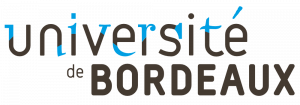
M2 – surface proteins – Gliobastoma cells – Team 01
We are seeking for a highly motivated M2 student to perform his/her internship in Team 01 – “Tumor and vascular biology laboratory” of BRIC under the supervision of Dr. Ahmad Charanek, starting from January 2024. If you are interested please send your CV and motivation letter to ahmad.charanek@u-bordeaux.fr.
Investigating the role of the surface proteins in controlling glioblastoma stem cell behaviour and resistance to therapy.
Glioblastoma (GB) is the most aggressive primary brain tumour with extremely poor clinical outcome and survival that rarely exceeds 15 months after diagnosis. The present standard of care for GB includes maximal surgical removal followed by treatment with Temozolomide and ionizing radiation (1-4). However, the main challenges in the clinical management of GB tumors is their intrinsic resistance to currently applied therapies leading to tumor relapse. GB tumors contain a population of tumor initiating stem cells termed the GB stem cells (GSCs) that are endowed with properties to gain resistance, invade throughout brain tissue and develop a hyper-aggressive phenotype (5). Thus, eradicating GSCs in tumour bulk represents a promising approach to fight brain cancer at its roots. Nevertheless, there are presently no treatments targeting GSCs in GB. This is attributed to an incomplete understanding of the key pathways that control GSC fate. Hence, understanding the molecular mechanisms that govern GSC behaviour and resistance to therapy is pivotal in the development of novel therapeutic strategies.
Goal
In recent preliminary studies, using surface protein labelling assays, we have identified a novel complex of surface proteins that are specifically expressed in GSCs. Thus, in this proposal we aim to test the hypothesis that these proteins control GSC fate, tumorigenesis and resistance to therapy.
Description des missions
Methods
The present internship proposal will allow to discover a broad spectrum of techniques at in vitro and in vivo settings including:
Cell-culture, co-immunoprecipitation, proximity ligation assay, proliferation, extreme-limiting dilution assay, immunohistochemistry, live imaging, confocal imaging, and tumor growth in vivo.
Prerequisites
- High motivation
- Autonomy and personal initiatives
- Able to work in a team
- Scientific rigor
References
1. Chen J, McKay RM, Parada LF. Malignant glioma: lessons from genomics, mouse models, and stem cells. Cell. 2012;149(1):36-47.
2. Stupp R, Mason WP, van den Bent MJ, Weller M, Fisher B, Taphoorn MJ, et al. Radiotherapy plus concomitant and adjuvant temozolomide for glioblastoma. N Engl J Med. 2005;352(10):987-96.
3. Louis DN, Ohgaki H, Wiestler OD, Cavenee WK, Burger PC, Jouvet A, et al. The 2007 WHO classification of tumours of the central nervous system. Acta Neuropathol. 2007;114(2):97-109.
4. Louis DN, Perry A, Reifenberger G, von Deimling A, Figarella-Branger D, Cavenee WK, et al. The 2016 World Health Organization Classification of Tumors of the Central Nervous System: a summary. Acta Neuropathol. 2016;131(6):803-20.
5. Chen J, Li Y, Yu TS, McKay RM, Burns DK, Kernie SG, et al. A restricted cell population propagates glioblastoma growth after chemotherapy. Nature. 2012;488(7412):522-6.
Localisation du poste
B2 building
Université de Bordeaux, Bordes Campus
Pessac-Talence
Fiche technique
- Type : Stage / Internship
- Laboratoire : Équipe 01 – Laboratoire de biologie tumorale et vasculaire.
- Télétravail :
Contact
-
Ahmad
Charanek
- ahmad.charanek@u-bordeaux.fr



